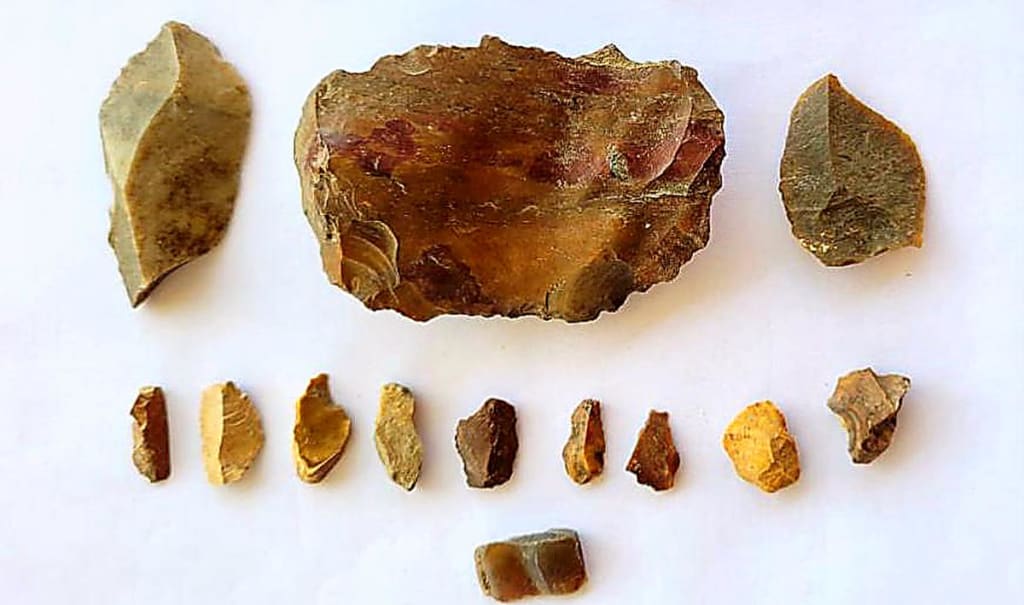Neolithic Stone Tools: Pioneering Technology in Early Human History
History

Neolithic stone tools represent a revolutionary advancement in human technology and culture during the Neolithic Period (circa 10,000 to 3,000 BCE). These tools, crafted from stone through meticulous craftsmanship and innovation, enabled early human societies to transition from hunting and gathering to settled agriculture and domestication. This article explores the origins, types, manufacturing techniques, functional uses, cultural significance, and enduring impact of Neolithic stone tools.
Origins and Historical Context
Neolithic stone tools emerged during a transformative period known as the Neolithic Revolution, characterized by the shift from a nomadic, hunter-gatherer lifestyle to settled agricultural communities. This transition occurred independently in various regions around the world, including the Middle East, Africa, Asia, Europe, and the Americas, marking a significant milestone in human cultural development.
Types and Manufacturing Techniques
Neolithic stone tools encompass a diverse range of implements, each designed for specific tasks:
- Flint Tools: Flint was one of the most commonly used materials due to its hardness and ability to be finely knapped into sharp edges for cutting, scraping, and piercing. Examples include arrowheads, knives, scrapers, and axes.
- Ground Stone Tools: Some tools were crafted through grinding and polishing rather than flaking. These included grinding stones, pestles, and axes, which were essential for food processing, agriculture, and woodworking.
- Bone and Antler Tools: Neolithic communities also used organic materials such as bone and antler for crafting tools like needles, awls, and harpoons, demonstrating early innovations in specialized tool-making.
Functional Uses and Technological Advancements
Neolithic stone tools served essential functions that supported the development of early human societies:
- Hunting and Butchering: Sharp-edged tools like flint arrowheads and knives were crucial for hunting game and processing meat, contributing to dietary diversity and food security.
- Agricultural Implements: Ground stone tools such as sickles and axes were instrumental in clearing land, cultivating crops, and harvesting grains, facilitating the transition to agriculture and sedentary lifestyles.
- Craftsmanship and Specialization: Neolithic communities developed specialized techniques for tool production, such as pressure flaking, heat-treating, and grinding, which improved tool durability and functionality.
Cultural Significance and Social Implications
Neolithic stone tools had profound cultural and social implications:
- Technological Innovation: The development of sophisticated tool-making techniques marked a significant leap forward in human technological prowess, enabling greater efficiency in resource extraction, food production, and craftsmanship.
- Economic Advancement: Access to reliable tools enhanced productivity and resource management, fostering economic stability and specialization within Neolithic communities.
- Cultural Expression: Stone tools were also adorned with symbolic engravings or decorations, reflecting cultural beliefs, artistic expression, and social status within early societies.
Enduring Impact and Archaeological Legacy
The legacy of Neolithic stone tools is evident in archaeological discoveries and cultural heritage:
- Archaeological Insights: Excavations of Neolithic sites worldwide have unearthed an extensive array of stone tools, providing valuable insights into early human behavior, technological evolution, and cultural adaptation.
- Continued Influence: Although supplanted by metal tools during the subsequent Bronze Age, Neolithic stone tools laid the foundation for subsequent advancements in metallurgy, tool-making, and technological innovation.
- Educational Value: Study of Neolithic stone tools informs our understanding of prehistoric societies, technological development, and the transition from ancient to modern human lifestyles.
Conclusion
Neolithic stone tools represent a watershed moment in human history, marking the transition from Paleolithic hunting and gathering to Neolithic agriculture and settlement. These innovative implements enabled early human societies to thrive, adapt, and advance across diverse landscapes worldwide. As testaments to human ingenuity and resourcefulness, Neolithic stone tools continue to enrich our understanding of early technological achievements, cultural diversity, and the enduring legacy of our ancestors' quest for survival and progress. Their significance as foundational artifacts underscores their pivotal role in shaping the course of human civilization during the Neolithic Era and beyond.
About the Creator
Marveline Merab
“History never repeats itself. Man always does.”
― Voltaire
Enjoyed the story? Support the Creator.
Subscribe for free to receive all their stories in your feed. You could also pledge your support or give them a one-off tip, letting them know you appreciate their work.






Comments (1)
Interesting and delicious content, keep posting more now